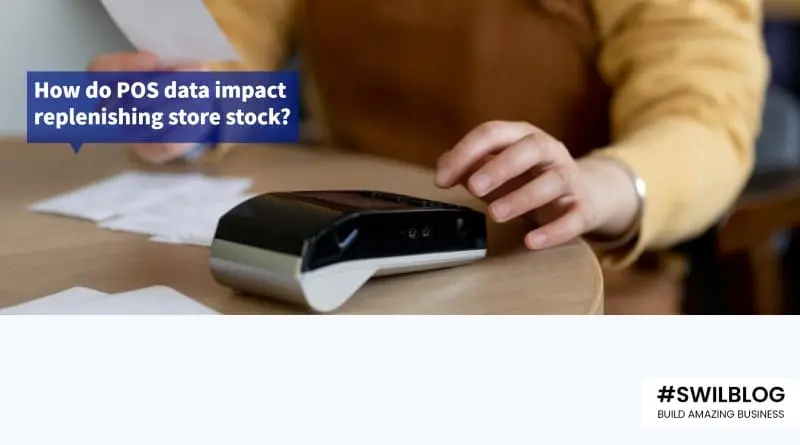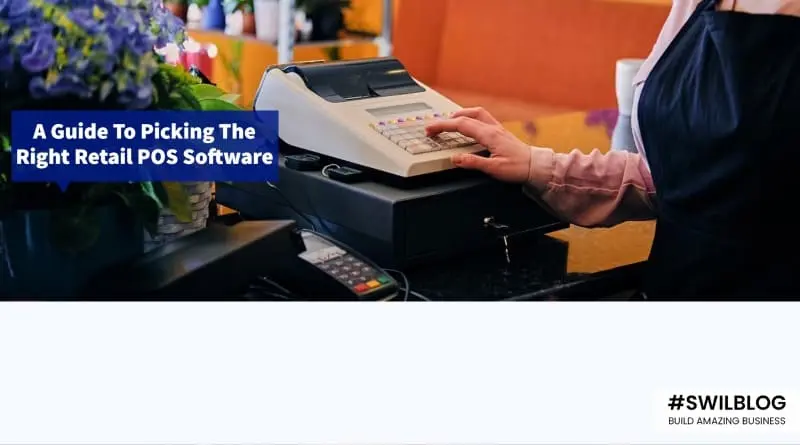At the point of sale, data is automatically collected. The data includes consumer and corporate insight. For instance, a number of additional significant related data, such as customer information, chosen products, payment method, and the location of the purchase, can be collected. In addition to providing patterns between purchases, stock, seasons, and other relevant factors, this data can also give businesses insights into how their customers behave.
We are all aware of how crucial data is. For instance, during the pandemic, customer confidence in the fashion and accessory industry declined. According to McKinsey, data will be a key element in restoring customer confidence.
Although these data sets are very valuable, working with them in their raw state can be challenging. The best method to make the most of this data is to extract it, format it, and combine it to create essential inventory management systems. Once assembled, it can be utilized in the shop stock replenishment process.
Article Content-
- Why it’s Important to Analyze POS Data
- How To Use POS Data For Stock Replenishment
- POS data is helpful when out-of-stock is not an option
- The significance of POS data for stock replenishment in stores
- Conclusion
Why it’s Important to Analyze POS Data
Point-of-sale (POS) terminals collect a tonne of information every day. However, because it is raw data, there are limits to how it may be applied. The data needs to be gathered, standardized, and analyzed to deliver the most value possible for merchants looking to gain a deeper understanding of their business. After analysis, POS data can assist you in predicting stock counts, enhancing marketing initiatives, and gaining in-depth knowledge of your potential clients.
The sales cycle flow is disrupted by returns, exchanges, and refunds. The likelihood that your products will end up in a customer’s shopping cart is not assured by sending them to wholesalers and retailers. Your POS data can give you insights into spotting patterns surrounding these interruptions, leading to more efficient distribution and sales process.
By looking at the things that consumers frequently purchase together, the POS data may also be used to gain a deeper knowledge of the customers. By grouping products that are likely to be purchased together, this data helps firms plan upcoming promotions as well as shop layouts.
How To Use POS Data For Stock Replenishment
In this section, we will discuss how to use POS data for stock replenishment.
- The first thing you should do is establish a relationship with your suppliers. This will allow you to get the latest information about the products that are available in your store and their prices.
- The next step is to make sure that your POS system is connected to the supplier’s system. This way, when you order a product from your supplier, it will be automatically updated in your inventory.
- The third step is to make sure that you have enough storage space for the products that are being delivered from the supplier’s warehouse. If not, then you should hire more staff or find another solution for storing these products until they are sold at your store.
As a retailer, you may want to order a stock replenishment based on the market demand. For example, if it is lunchtime and your store has a lot of people inside, then you could place an order for more sandwiches and cookies and then deliver them to your store. If there are not many customers in the store but later on during the day when customers come in, you could place an order for more drinks and ice cream to be delivered to the store.
POS data is helpful when out-of-stock is not an option
In the retail industry, being out-of-stock prevents customers from making purchases when there is a need. POS data tracks patterns to determine which products are popular at what time of day, week, or year. This helps companies plan for demand and prioritize the right products to stock in their stores using effective supply chain management.
The capacity to manage numerous product categories while keeping enough finished goods on hand is the biggest advantage a retail organization may experience. In order to understand how to handle out-of-stock issues down to the smallest level, which is a practice for good inventory management, hourly sales data with significant gaps during peak sales periods should be employed.
The POS system can also dynamically update stock levels in real time while hiding unavailable items from online shoppers, preventing customers from ordering out-of-stock items. The technology quickly notifies the sales staff if the number of products added to the basket is more than the number of products that are available in the designated warehouse.
Additionally, some of the most recent POS systems have business forecasting tools that use POS data to manage inventory. If there are fewer than a particular quantity of products in the warehouse, the system will automatically alert management and the employees. This can assist the business in quickly restocking its inventory.
The significance of POS data for stock replenishment in stores
POS data is the most vital information for store stock replenishment. It helps retailers accurately predict demand and manage inventory.
The POS data is used to predict the inventory needs of the store. It provides a complete overview of the inventory and sales of a store. The importance of POS data for store stock replenishment can be seen in many ways. It helps retailers to forecast their inventory needs and also helps them to plan their supply chain more efficiently. Inventory forecasting is one of the most important tasks for any retailer, but it can be challenging because there are many factors that affect it. The POS data is one way that retailers can use to forecast their inventory needs and make better decisions about how much product they need in stock, what products they need more or less of, and how much shelf space they need for each product category.
The most common use of POS is for the inventory replenishment process. The company can plan its inventory in advance to ensure that it will be stocked up on items when needed. This helps reduce the risk of stockouts that can lead to customer dissatisfaction, loss of revenue, and decreased productivity.
The second common use of POS is for distribution planning. Distribution planning with POS can help a company eliminate waste and increase efficiency. By using the inventory planning formula, companies can monitor the use of their inventory and optimize their purchasing.
Conclusion
As you can see, POS data can be quite helpful for stock replacement in stores. That is not all, though. It can also be very helpful in other aspects of inventory control.
SWIL has shown its expertise in helping modern businesses adopt excellent inventory management software and cutting-edge retail management systems with ERP features. It provides insights into customer behavior and trends and enables retailers to develop new ways of marketing and building relationships with customers.
It allows retailers to run reports on any aspect of their business, such as customer demographics, customer lifetime value, store performance, product performance, etc. The system also provides data visualizations that are easy to understand for all levels of employees in the company.







